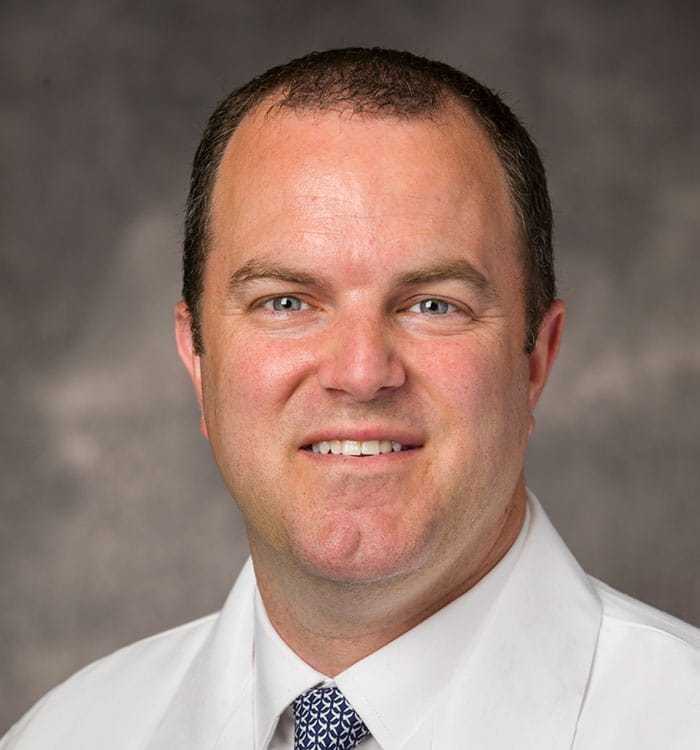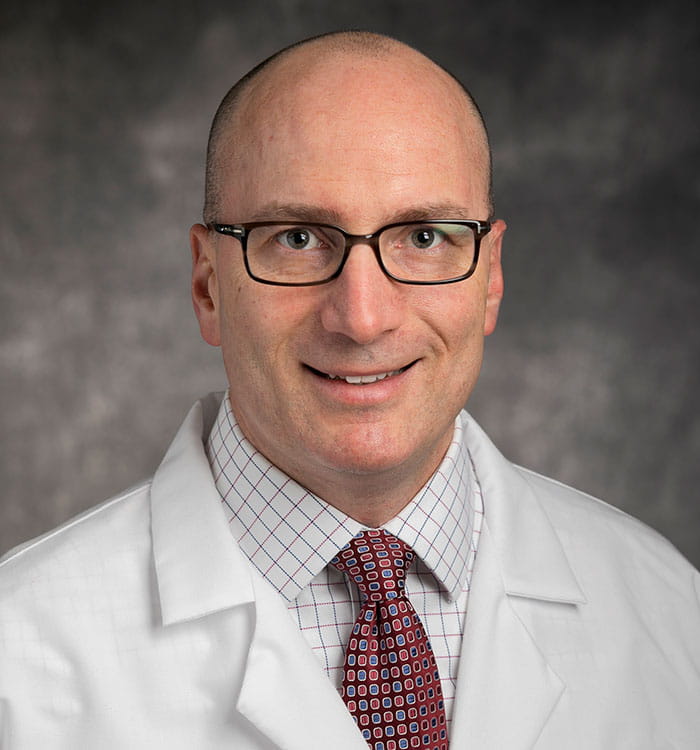How UH Sports Medicine Got Athletes Back on the Field during COVID-19
October 26, 2020
Physicians help educate schools, administrators, coaches and athletes on how to design a safe return to play
innovations in Orthopaedics | Fall 2020
 Robert Flannery, MD
Robert Flannery, MD Sean Cupp, MD
Sean Cupp, MDThe SARS-CoV-19 pandemic hit school-age athletes especially hard — not only by putting a hold on in-person learning and socializing, but also by canceling practices, games and meets. Blessed with the resiliency of youth, they adapted.
They lifted weights in their garages, hit buckets of balls in their backyards, and ran around the neighborhood to stay in shape. But still: they longed to train with their friends and teammates.
To ensure youth athletes resumed “normal” training as soon as safely possible, University Hospitals Sports Medicine physicians helped educate schools, administrators, coaches and athletes on how to design a safe return to play.
“It’s important from both a mental and physical health standpoint that student athletes get back into competition and do what they love,” says Robert Flannery, MD, sports medicine physician and Clinical Assistant Professor at Case Western Reserve University School of Medicine. “We consider benefits of the social interaction, the structure and the activity against the risk of contracting or spreading the virus. As long as they follow the protocols, the benefits of being active and involved sports generally outweigh the risks.”
In addition, his role as assistant medical physician for the Cleveland Browns, Dr. Flannery serves as lead physician for St. Ignatius High School and Oberlin College. He also joined the NCAA Division III North Coast Athletic Conference’s (NCAC) newly formed wellness committee, which made recommendations to the Conference’s competition committee and school presidents on how to bring back sports. That meant assimilating CDC, NCAA, and multiple state and local government health recommendations into a single, usable, guide.
Sean Cupp, MD, Co-Director of UH Sports Medicine Institute and Lead Medical Team Physician for the Cleveland Browns, and Assistant Professor at the School of Medicine, faced similar challenges when advising the NFL, the Browns, and the Mid American Conference (MAC), an NCAA Division I conference with member teams across five states.
“We assimilated multiple public health guidelines on how, when and what to test to help schools determine how to move through CDC’s phases of return to sport,” says Dr. Cupp. “What will happen between the sidelines won’t look much different; what has changed is what they do when they’re not participating in practice or a game.”
UH SAFE RETURN TO PLAY GUIDELINES
University Hospitals incorporates CDC’s youth sports guiding principles into its Return to Play recommendations. Athletes, coaches and staff should consider the following1:
Before Practice
- Check yourself and household for COVID-19 symptoms. If symptomatic, stay home.
- Bring your own water bottle.
- Do not share equipment.
- Pack a bag with clean clothes and a separate bag for dirty clothes.
During Practice
- Athletes, coaches and trainers should wear masks. (Athletes can take them off during strenuous activity.)
- Everyone gets a temperature and symptom screening upon arrival.
- Practice outside and stay six feet apart when possible.
- Everyone uses hand sanitizer before practice.
- Coaches divide athletes into “practice pods” of up to 10 athletes. Practice and carpool within your pod as much as possible.
After Practice
- Place dirty clothes, masks and other gear into the bag you brought and put on clean clothes.
- Wash hands after practice.
- Shower at home.
Recommendations also include guidelines for athletes returning to practice after a suspected COVID-19 infection, cleaning and physical distancing.
In Ohio, athletes resumed practice starting May 26 with protocols in place. While professional sports have resumed competition between teams, youth sports competition rules vary by county. Some counties allow inner-squad competitions, some allow games between high schools in the same county, while others have simply canceled 2020 seasons.
So far, the new protocols have been successful. “We haven’t seen much, if any, spread among athletes from competition and practice,” Dr. Flannery says. “The risk is what happens outside of sports: kids being closer together than they should, going to parties, and generally not doing what is asked of them.”
Pressure from the top may help motivate younger athletes to stick with the program on and off the field. “I talk with upperclassmen about the legacy they want to leave behind,” Dr. Flannery says. “They should want to be remembered as the leaders instrumental in allowing sports to continue. That leadership experience will serve them well in the future.”
To refer a patient to a UH Sports Medicine Institute doctor, call 216-983-PLAY(7529).
Reference
1. University Hospitals COVID-19: Responsible Restart for Athletics webinar.


